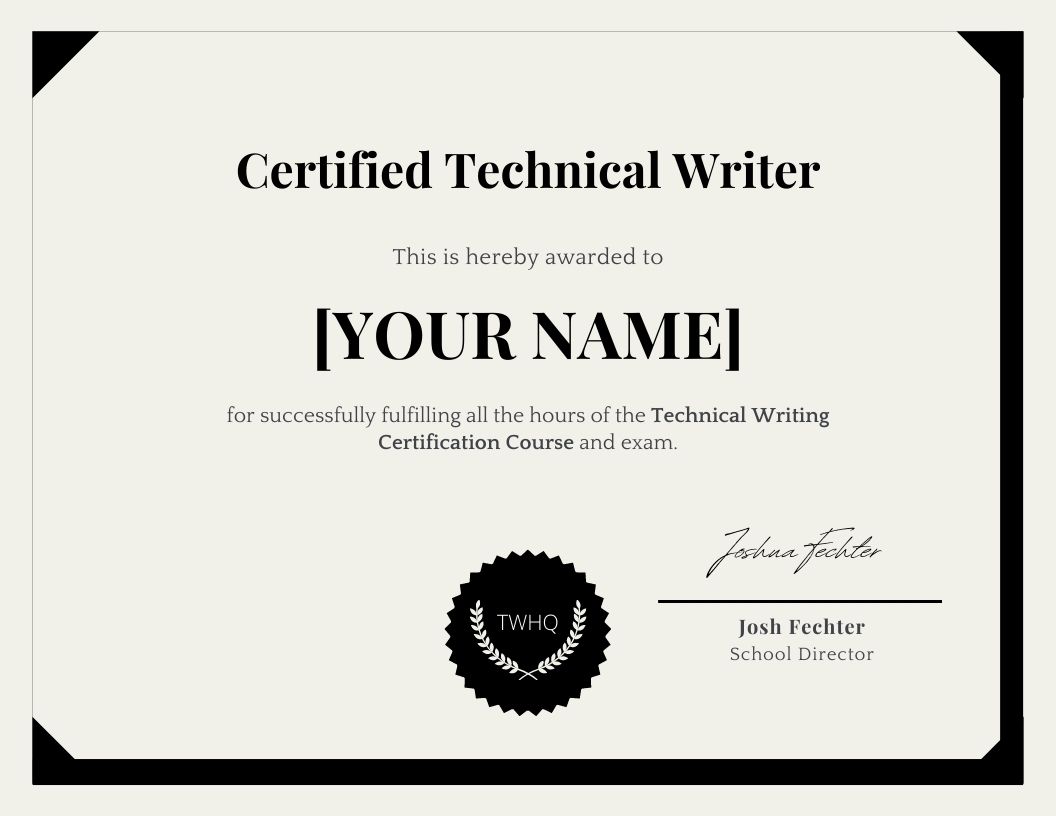Struggling to manage the growing complexity of document workflows in your organization? In today’s fast-paced enterprise environments, efficient document management is crucial for maintaining productivity and achieving organizational success.
With intricate workflows and stricter compliance requirements, adopting a reliable Enterprise Document Management Software (EDMS) solution is key to staying competitive, meeting regulatory standards, and supporting long-term growth.
Defining Enterprise Document Management Software
Enterprise Document Management Software (EDMS) is a centralized system designed to help organizations store, manage, and collaborate on both digital and physical documents. It simplifies the document lifecycle, covering everything from creation, editing, and sharing to secure archiving and retrieval.
This software is widely adopted across industries, including businesses, government agencies, non-profit organizations, and educational institutions. Key users often include managers, administrators, IT professionals, and employees who rely on seamless collaboration and access to critical documents to perform their daily responsibilities.
By implementing EDMS, organizations benefit from features like version control, document workflows, and granular permissions, enabling teams to work more efficiently. EDMS also supports regulatory compliance by maintaining an audit trail, ensuring documents meet industry standards and legal requirements.
Additionally, EDMS serves as a centralized location for securely managing documents, reducing the risk of errors, and enabling better teamwork. Whether storing an electronic filing cabinet or managing unstructured information, EDMS ensures that information is organized, accessible, and protected.
Benefits and Importance of Enterprise Document Management Software
Organizations across industries face mounting challenges in managing their documents efficiently. Enterprise Document Management Software (EDMS) addresses these challenges by offering a range of benefits that directly impact productivity, collaboration, and compliance.
Key Benefits of EDMS
- Enhanced Collaboration: EDMS fosters teamwork by providing real-time document editing, automated workflows, and tools for tracking contributions. Teams can collaborate seamlessly, even across different locations, using centralized and cloud-based platforms.
- Improved Efficiency: Features like metadata tagging, version control, and document indexing make it easier to organize, locate, and update documents. These capabilities save time and reduce the risk of duplicating efforts.
- Strengthened Compliance: EDMS supports organizations in meeting regulatory requirements through features like audit trails, role-based permissions, and compliance management. These tools ensure sensitive information is secure and accessible only to authorized users.
- Streamlined Document Workflows: Automating repetitive tasks, such as approvals and notifications, allows organizations to focus on higher-value activities. EDMS facilitates faster turnaround times and reduces manual errors.
- Reliable Data Backup and Recovery: With cloud-based storage and robust backup solutions, EDMS enables organizations to safeguard their documents against data loss. This ensures business continuity and minimizes downtime.
- Scalability and Integration: EDMS grows with your organization, handling increasing volumes of documents and integrating seamlessly with existing systems like CRM, ERP, and project management software.
Enterprise Document Management Software Main Features
Enterprise Document Management Software (EDMS) offers a variety of features designed to simplify document management, enhance collaboration, and improve organizational efficiency. Below are the key features commonly found in EDMS, expanded with additional capabilities:
Version Control
Version control tracks changes across a document’s lifecycle, allowing users to access previous versions and monitor updates. This feature ensures that teams can collaborate effectively without losing important edits or creating duplicate versions. It also maintains a historical log of changes, which is critical for compliance and auditing purposes.
Document Indexing
Indexing organizes documents by categories, tags, and metadata, enabling faster and more accurate search results. With advanced search functionality and optical character recognition (OCR), EDMS can even retrieve text from scanned documents, streamlining access to unstructured information.
Security & Access Control
Security is a cornerstone of EDMS. Features like role-based permissions, granular access controls, and audit trails ensure sensitive documents are protected from unauthorized access. EDMS also supports compliance tracking, ensuring that organizations adhere to industry regulations and data privacy laws.
Workflow Automation
By automating repetitive tasks, such as approvals, notifications, and document routing, EDMS significantly reduces manual workloads. Automated workflows optimize business processes, improve turnaround times, and help maintain consistency across document lifecycles.
Collaboration Tools
Collaboration features such as real-time document editing, inline comments, and notifications make teamwork seamless. These tools help teams co-author documents, share feedback, and stay aligned on projects, even when working remotely or across time zones.
Integration with Third-Party Applications
EDMS integrates with existing business software like CRM, ERP, and project management tools to ensure data consistency and improve operational efficiency. It also supports electronic signature (eSignature) solutions, making it easier to finalize documents without relying on external systems.
Metadata Management
Advanced EDMS platforms allow for metadata tagging, which helps classify and organize documents based on their content. This feature ensures that documents are easily searchable and provides additional context for users navigating large repositories of information.
Mobile Access
With mobile support, users can access, edit, and approve documents from any device. Offline capabilities and cloud-based storage ensure uninterrupted productivity, even when users are working remotely or traveling.
Document Archiving
Archiving capabilities ensure that older documents are securely stored while remaining accessible for reference or compliance purposes. EDMS automates retention policies, ensuring documents are retained or deleted in accordance with organizational standards.
Best Enterprise Document Management Software
Selecting the right EDMS for your organization is essential. Below are seven top options, each offering unique features to meet diverse business needs:
Microsoft SharePoint
Microsoft SharePoint is a feature-rich platform designed for enterprises seeking seamless collaboration and document management. It integrates effortlessly with the Microsoft ecosystem, including Office 365, making it a go-to solution for businesses already using Microsoft products. SharePoint supports team collaboration, secure document sharing, and customizable workflows to adapt to your organization’s specific needs.
Features
- Version control and document indexing
- Advanced search capabilities for faster document retrieval
- Customizable workflows and task automation
- Tight integration with Microsoft Office 365 ecosystem
Pricing
SharePoint pricing starts at $5 per user per month, with variations based on the plan and number of users.
Google Drive
Google Drive is a popular cloud-based document management solution that emphasizes simplicity and collaboration. With integration into Google Workspace, it provides powerful tools for real-time editing, file sharing, and document organization. Its scalable storage options make it ideal for businesses of all sizes, from startups to large enterprises.
Features
- Real-time collaboration and editing through Google Docs, Sheets, and Slides
- Version history and easy file restoration
- Granular sharing permissions and robust access control
- Integration with other Google Workspace applications
Pricing
Google Drive offers a free tier for individual users, while business plans start at $6 per user per month.
Box
Box is a secure, cloud-based document management platform that prioritizes data protection and compliance. It is particularly well-suited for industries handling sensitive information, such as finance or healthcare. Box also facilitates collaboration with tools for real-time editing and integrates with popular business applications to streamline workflows.
Features
- Advanced security features, including compliance with industry standards (e.g., GDPR, HIPAA)
- Granular access controls and permissions to protect sensitive files
- Real-time collaboration tools with file comments and notifications
- Integration with third-party applications like Salesforce and Slack
Pricing
Box offers multiple pricing plans, with the Business plan starting at $15 per user per month.
Alfresco
Alfresco is an open-source document management solution tailored for organizations with unique requirements. Known for its flexibility, Alfresco allows businesses to customize workflows, manage content efficiently, and integrate with other applications to create a tailored EDMS experience.
Features
- Open-source platform supported by a strong developer community
- Comprehensive content management and collaboration features
- Business process automation with customizable workflows
- Integration with third-party applications for extended functionality
Pricing
Alfresco provides a free Community Edition, while enterprise solutions require contacting their sales team for a custom quote.
M-Files
M-Files stands out with its AI-powered approach to document management. It automatically classifies and organizes documents based on their metadata, making it easier to locate and manage files without duplication. M-Files is ideal for businesses needing advanced search capabilities and streamlined workflows.
Features
- AI-driven document classification and content organization
- Robust version control and workflow automation
- Integration with popular business tools like Microsoft Teams and Salesforce
- Mobile access with offline capabilities for remote work
Pricing
M-Files offers tailored pricing based on your specific requirements. Contact their sales team for a personalized quote.
Laserfiche
Laserfiche is a comprehensive platform that combines document management, workflow automation, and electronic forms. Its easy-to-use interface and robust feature set make it a preferred choice for businesses aiming to optimize document processes and improve operational efficiency.
Features
- Secure document storage with advanced indexing
- Workflow automation and electronic forms for process optimization
- Integration with ERP, CRM, and other enterprise systems
- Security features like granular permissions and audit trails
Pricing
Laserfiche provides customized pricing based on your organization’s needs. Contact their sales team for more information.
DocuWare
DocuWare is a cloud-based document management system designed for scalability and ease of use. It supports document storage, workflow automation, and integration with various ERP and CRM platforms, making it versatile for businesses of all sizes.
Features
- Cloud-based document storage and management for easy access
- Workflow automation to streamline tasks and processes
- Integration with ERP and CRM systems for seamless data management
- Security features and compliance support to meet regulatory standards
Pricing
DocuWare offers flexible pricing plans based on user count and feature requirements. Contact their sales team for a custom quote.
How to Choose an Enterprise Document Management Software
Selecting the right Enterprise Document Management Software (EDMS) is a critical decision that can significantly impact your organization’s efficiency, compliance, and collaboration. To make an informed choice, consider the following factors:
Needs and Requirements
Start by identifying your organization’s specific document management needs. Determine whether you require features like collaboration tools, version control, or compliance tracking. For instance, industries with strict regulatory requirements may prioritize audit trails and retention policies, while fast-growing businesses may need scalable solutions to handle growing document volumes.
Ease of Use
User adoption is key to the success of any EDMS. Opt for software with an intuitive interface and straightforward workflows to reduce the learning curve for your team. Some platforms offer onboarding assistance and training resources to make implementation smoother.
Scalability
Choose a solution that can grow with your organization. Scalable EDMS platforms allow for increased document storage, more complex workflows, and additional users without compromising performance. Assess the platform’s ability to handle future demands, including content classification and information governance services.
Security and Compliance
Ensure the EDMS offers robust security features to protect sensitive data. Look for role-based permissions, granular access controls, and text extraction to meet your organization’s security needs. Additionally, check if the platform supports compliance and regulatory adherence for industry-specific standards, such as GDPR or HIPAA.
Integration with Existing Systems
Your EDMS should work seamlessly with your existing software stack, such as CRM, ERP, and project management tools. Integration capabilities ensure streamlined workflows, consistent data exchange, and improved efficiency. Platforms with metadata management and record administration features are especially useful for maintaining an organized system.
Customization Options
Every organization has unique processes and requirements. Choose software that allows for customization, such as configurable workflows, templates, or user roles. Customization ensures the EDMS aligns perfectly with your business objectives and operational needs.
Pricing and Total Cost of Ownership
Evaluate the pricing structure of each EDMS, including subscription fees, implementation costs, and ongoing expenses. Be mindful of potential hidden costs, such as fees for additional storage or advanced features. Ensure the solution fits your budget without compromising on essential functionalities.
By considering these factors, you can make an informed decision and select the EDMS that best meets your organization’s needs.
Here are some of the top technical writing courses you can check out to strengthen your writing and documentation skills.
Conclusion
Enterprise Document Management Software (EDMS) serves as a vital tool for modern organizations looking to streamline their operations, enhance collaboration, and maintain compliance in an increasingly digital world. From simplifying document storage and retrieval to enabling advanced workflows and ensuring data security, EDMS solutions offer capabilities that directly address the challenges of managing large volumes of information.
Whether you’re a small business or a large enterprise, selecting the right EDMS requires careful evaluation of your organization’s unique needs, scalability requirements, and integration capabilities. By leveraging the right platform, you can unlock greater efficiency, improved collaboration, and long-term growth.
Investing in a well-suited EDMS is not just about managing documents; it’s about empowering your teams, maintaining compliance, and driving operational success. As technology continues to evolve, having a robust document management solution in place ensures your organization stays competitive and prepared for the future.
Frequently Asked Questions (FAQs)
What is the difference between an electronic document management system (EDMS) and an enterprise document management system (EDMS)?
An electronic document management system is primarily focused on managing digital documents throughout their lifecycle, such as creation, storage, and retrieval. In comparison, an enterprise document management system (EDMS) encompasses both digital and physical documents, offering more advanced features like workflow automation, metadata tagging, and integration with third-party applications like CRM and ERP systems. EDMS is designed to address the broader needs of organizations, including compliance, collaboration, and scalability.
Why do many document management systems offer cloud-based solutions?
Cloud-based solutions provide users with the flexibility to access documents from any location or device, fostering better collaboration and productivity. These systems offer scalable storage, allowing organizations to manage increasing document volumes without infrastructure limitations. Additionally, cloud-based platforms often include robust data backup, disaster recovery, and advanced security measures to protect sensitive information and ensure business continuity.
How does an effective document management system help with regulatory compliance?
An effective EDMS ensures regulatory compliance by maintaining audit trails, version control, and role-based permissions. These features allow organizations to track who accessed or modified a document, ensure data integrity, and restrict unauthorized access. Furthermore, EDMS platforms often support retention policies, which automate the process of storing or securely disposing of documents according to compliance regulations.
What are the main benefits of using the best document management software for businesses?
The best document management software enhances productivity by automating repetitive tasks, such as document routing and approvals. It improves collaboration through real-time editing, notifications, and seamless sharing, even across remote teams. Additionally, features like metadata tagging, advanced search functionality, and OCR (optical character recognition) streamline document retrieval and organization. Businesses also benefit from improved security, compliance tracking, and integration with existing systems for better workflow efficiency.
How does enterprise document management systems support document editing and collaboration?
Enterprise document management systems integrate with popular office tools like Microsoft Office and Google Workspace, enabling users to edit documents directly within the platform. Common features include real-time editing, inline comments, and version history, which provide transparency and foster seamless teamwork. Notifications and document sharing options ensure that team members stay informed and aligned, whether they work onsite or remotely.
Can enterprise document management systems handle mobile access?
Yes, most enterprise document management systems support mobile access, allowing users to view, edit, and approve documents from their smartphones or tablets. Many platforms offer offline capabilities and cloud-based synchronization, ensuring uninterrupted productivity, even without a reliable internet connection.
How do document management systems support scalability?
Document management systems are designed to grow with your organization. They handle increasing volumes of documents, users, and workflows without compromising performance. Features like cloud-based storage, metadata management, and customizable workflows ensure the system can meet evolving business needs over time.
What is metadata tagging, and why is it important in EDMS?
Metadata tagging is the process of assigning descriptive tags or keywords to documents, making them easier to categorize, search, and retrieve. In an EDMS, metadata tagging simplifies document organization and enhances search functionality, especially when dealing with large repositories. It reduces time spent locating files and ensures more accurate results.
How do enterprise document management systems integrate with third-party tools?
Enterprise document management systems often include built-in integration capabilities with tools like CRM, ERP, and project management software. These integrations ensure seamless data exchange, streamline workflows, and enhance overall efficiency. For example, an EDMS can be connected to a CRM system to automatically attach customer-related documents to their profiles, improving organization and accessibility.
If you are new to technical writing and are looking to break-in, we recommend taking our Technical Writing Certification Course, where you will learn the fundamentals of being a technical writer, how to dominate technical writer interviews, and how to stand out as a technical writing candidate.




















